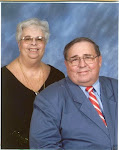My older daughter sent me a quiz today and because it's about things that are more than 40 years old, I did very well -- in fact, I got them all correct, which means, according to the answer sheet that I'm "older than dirt". It said a few other things as well about my mental abilities.
Anyway, I thought I'd clarify the words that you youngsters may not know, and which I, growing up in Runnemede used often.
Dimmer switches on automobiles -- are they even called that now? It was a button on the floor of the car on the driver's side next to the clutch which you hit with your left foot to make the lights go from bright to not so bright, thus the name "dimmer switch." Now, you flip the light control bar behind the steering wheel.
What's a clutch? If you've ever driven a manual transmission you know what that is. A manual transmission means you do the work in shifting the gears, not as in an automatic transmission where the work is done for you by the way the transmission is built. Few cars today have a manual transmission.
Clothes sprinkler -- in the OLD days before we had steam irons, we had to make the clothes moist so the wrinkles -- and there were wrinkles because there was no such thing as permanent press -- would go away. One way was to sprinkle the clothes on ironing day in the morning, rolls them up and wait for the moisture to go through the whole item to be ironed. This was also before spray starch or spray sizing. So, the clothes sprinkler was a soda bottle or some other bottle with holes punched in the lid so just a sprinkle of water would come out -- sort of like that button on today's irons that gives that extra squirt of steam on a hard-to-get-rid-of wrinkle. I don't know why we didn't just leave the clothes a little damp and iron them while they were still damp. Seemed like an extra step to me.
You also had to be careful, because if the clothes were left moist for just a little too long they smelled sour and you had to wash them again, and start over. Sometimes in the sprinkler bottle oils of lavender or rose oil were mixed with the water so the clothes smelled nice.
I already addressed the issue of the cream squirting out the top of the bottle in a previous BLOG.
A popular chewing gum (not Chicklet -- a small piece of gum which was sugar coated) back in the 40s and 50s was Blackjack gum. You got five sticks for a nickle. It came in a blue and black wrapper, and it tasted like licorice. Not my favorite. I preferred cinnamon Chiclets -- they tasted like red-hots.
Stockings -- stockings were pantyhose without the pantie. I mentioned this previously. You had to wear a very uncomfortable gadget called a girdle or a garter belt to hold them up. Or, if you wanted to cut off your circulation you could wear a garter. The stockings came to the top of your thighs, and down the back there was a seam which was where the piece of nylon was stitched together to form the stocking. This seam was a pain as it had to be kept straight or the back or you leg looked like &*()@. So, because of a shortage of nylon/silk during World War II and after that, ladies took to using an eyebrow pencil and drawing a "seam" up the back of their leg so people would think they had stockings, when, in fact, they didn't.
Wax candy -- I think you can still get these today. They were wax (like the stuff used to seal jelly during canning) and they came in various shapes and sizes, and inside that wax was a juice -- basically colored sugar water. Yummm! Not one of my favorites.
Butch wax -- what? Butch wax was a special wax (not floor wax and not furniture wax) that boys and men used to keep their BUTCH (crew) cuts up in the front. It was a style thing.
Skates -- no in-line skates for us. Our outdoor skates were made of all metal. They had clamps on the front which you loosened and tightened with a key. The thing was, however, if you didn't have a pair of shoes that had soles that were separate from the shoe -- not like a sneaker where it's all one piece -- there was no way you could get those skates to stay on. I finally got the wise idea that a piece of heavy twine tied around the whole front of the skate would keep the skate on better, so I used that. They also had a leather ankle strap to keep the back end on.
Today many people have a hard time making a decision. Not so back in the "good old days" we simple went "eeny-meeny-miney-mo, catch a monkey by the toe, if he hollers let him go, eeny-meeny-miney-mo." And with each word you would point at what you were trying to decide -- like which piece of candy would be a best buy.
Polio -- I'm going to write about that in a separate BLOG.
Duck-and-cover drill -- I think you can relate to this as it's the same as a tornado drill. You would duck under your desk and cover our head with your hands. It was something we practiced in case someone dropped a nuclear bomb on us. Stupid, when you think of it. We would have been fried anyway, and all the dropping, ducking, and hiding under our desks wouldn't have helped at all.
Princess Summerfallwinterspring -- think about it. All the seasons. She was a a part of the Howdy Doody show -- a puppet show that was very popular with children in the 40s and 50s. You can find lots of stuff about this on-line, just Google "Howdy Doody".
Mimeograph -- an old fashioned means of duplicating something on paper. I don't know how to explain this. Prior to this method there were stencils, which were very messy and dirty when you were printing out what was on the stencil. Mimeographed items were typed on a two-piece paper and carbon set -- the carbon part was a special material that would not disappear when added to the spirit juice. The machine was very similar to a stencil machine, you turned a crank after you affixed your stencil/carbon side up to the drum, and this spirit juice would, if the machine was working correctly, slowly drip over the stencil allowing you to make up to 100 copies from one stencil. For all I know some schools are still using this method. The important thing was it smelled so good so when got the paper(s) you automatically sniffed the paper.
My children should remember the mimeograph machine because we had one and when I was teaching at BBCS I used it almost every day to give my students extras, including games such as Pundles. Another word that isn't around any more.
Tuesday, October 23, 2007
Subscribe to:
Post Comments (Atom)



No comments:
Post a Comment